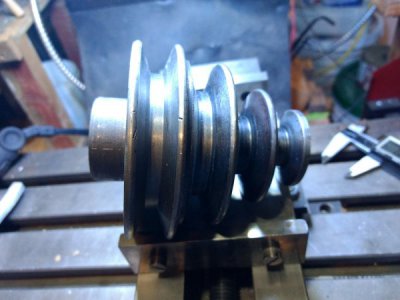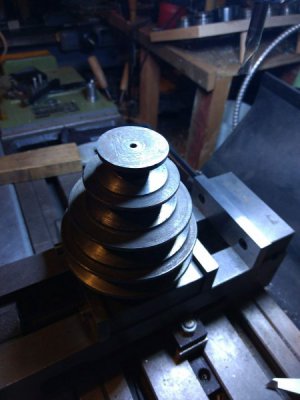I need to bore this out from 22mm (.865) to .875". Not much to hold on to on the small end with a 4 jaw so I machined the outer Vee wider to .150" which is still not ideal. I was considering extending it 1/2" or so by tapping and attaching a round plate to the small end with a 3/8" screw. The pulley is cast iron 4" long. What do ya think?




